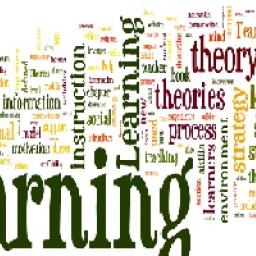Student motivation is a popular topic in education. We all talk about students’ motivation and how important this is for academic performance. Indeed, a strong relationship between university students’ motivation and academic performances is demonstrated (Richardson, Abraham, & Bond, 2012). Though, not all types of motivation appear beneficial for learning performances. Motivation is an extensively researched topic and there are multiple motivation theories conducted, which are to a certain degree in line with each other.
Self-Determination Theory
A well-known theory on motivation is the Self-Determination Theory (SDT), which states that students are more likely to become autonomously motivated when the three psychological needs – autonomy, competence, and relatedness – are fulfilled (Deci & Ryan, 2000). These needs indicate:
- a need for control over one’s own study activities (i.e., autonomy),
- a need to feel capable in successfully perform study activities (i.e., competence), and
- a need for support of and connections with teachers and fellow students (i.e., relatedness).
Autonomous vs. controlled motivation
When these needs are fulfilled in the learning environment, students are more likely to study because they enjoy it or because studying has a personal value for them, which is called autonomous motivation. Opposed to autonomous motivation is controlled motivation, which holds that students only study for external reasons (e.g., study to avoid feelings of guilt or because others want this). The SDT shifts from the traditional distinction between intrinsic and extrinsic motivation to a distinction between autonomous and controlled motivation. SDT states that not all forms of extrinsic motivation are detrimental for learning.
Goals
A construct that is related to SDT is the goal orientation of students. Students can have mastery goals (i.e., wanting to learn and develop) or performance goals (i.e., performing to demonstrate competence compared to others; Elliot & McGregor, 2001). Mastery goals are very much in line with autonomous motivation, whereas performance goals are in line with controlled motivation. Autonomous motivation is desirable in students, because it positively relates to effective study outcomes, such as deeper learning and better time-management (Vansteenkiste, Simons, Lens, Sheldon, & Deci, 2004). Controlled motivation, on the other hand, hampers learning, as can be seen for example by a positive relation with drop-out (Vansteenkiste, Zhou, Lens, & Soenens, 2005).
Competency and autonomy
The SDT further relates to one of the questions underlying motivation according to Pintrich (2003), namely “Can I do this task?” In order for students to answer that question with “Yes”, they need to feel competent about their study-related capabilities and need to belief that they are responsible for successful performance. These are in line with two needs of SDT; competence and autonomy. They question now is, how can we use this scientific knowledge on motivation and apply it in universities to support study success of students?
In practice
In order to achieve this, the three basic needs of the SDT need to be fulfilled. Increasing feelings of autonomy can be attained when teachers provide students with choice in their learning activities. When having choice, students feel they have control over their own learning. Competence can be increased when students are provided with positive feedback on the result of their learning activities by the teacher and peers. Further, providing students with relevant, challenging (i.e., not too simple, neither too difficult) tasks with sufficient amount of guidance and/or support aids to increase feelings of competence and in turn intrinsic motivation. Relatedness feelings are enhanced when students are allowed to collaborate on learning tasks and when teachers show interest in students. A possible way to achieve this is by letting students work together in small groups where a teacher can give more personal support and where students get to know each other better.
References
Deci, E. L. & Ryan, R. M. (2000). The “what” and “why” of goal pursuits: Human needs and the self-determination of behavior. Psychological Inquiry, 11, 227–268. doi:10.1207/S15327965PLI1104_01
Elliot, A. J. & McGregor, H. A. (2001). A 2 x 2 achievement goal framework. Journal of Personality and Social Psychology, 80, 501-519. http://dx.doi.org/10.1037/0022-3514.80.3.501
Richardson, M., Abraham, C., & Bond, R. (2012). Psychological correlated of university students’ academic performance: A systematic review and meta-analysis. Psychological Bulletin, 138, 353–387. doi:10.1037/a0026838
Pintrich, P.R. (2003). Motivation and classroom learning. In G.E. Miller & W.M. Reynolds (Eds.), Handbook of psychology: Educational psychology (Vol. 7, pp. 103-122). New York, NY: John Wiley & Sons.
Vansteenkiste, M., Simons, J., Lens, W., Sheldon, K. N., & Deci, E. L. (2004). Motivating learning, performance, and persistence: The synergistic effects of intrinsic goal content and autonomy-supportive contexts. Journal of Personality and Social Psychology, 87, 246–260. doi:10.1037/0022-3514.87.2.246
Vansteenkiste, M., Zhou, M., Lens, W., & Soenens, B. (2005). Experiences of autonomy and control among Chinese learners: Vitalizing or immobilizing? Journal of Educational Psychology, 97, 468–483. doi: 10.1037/0022-0663.97.3.468



